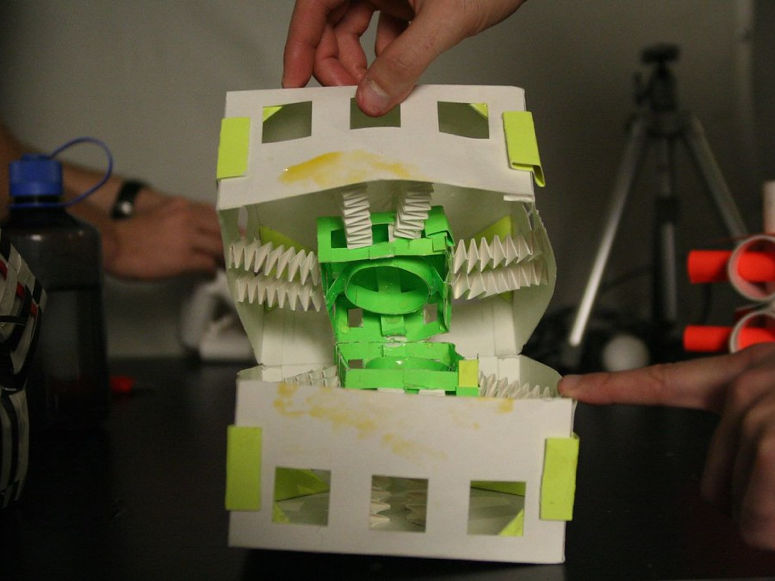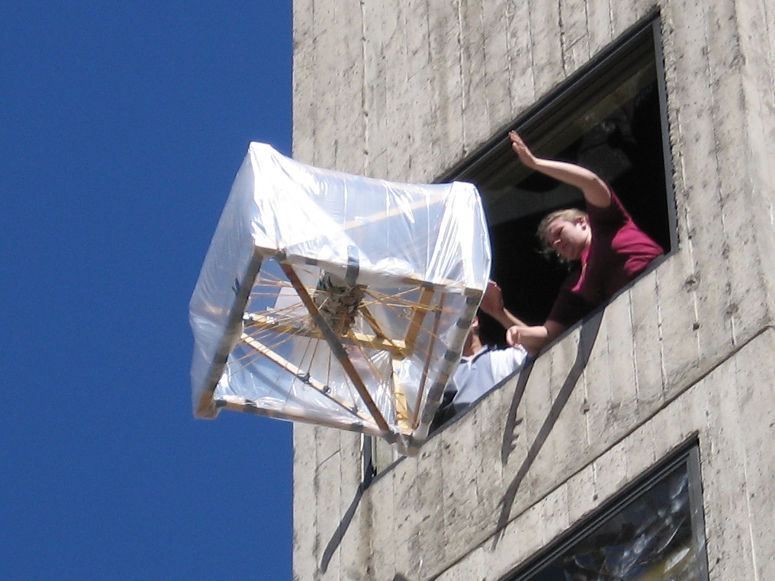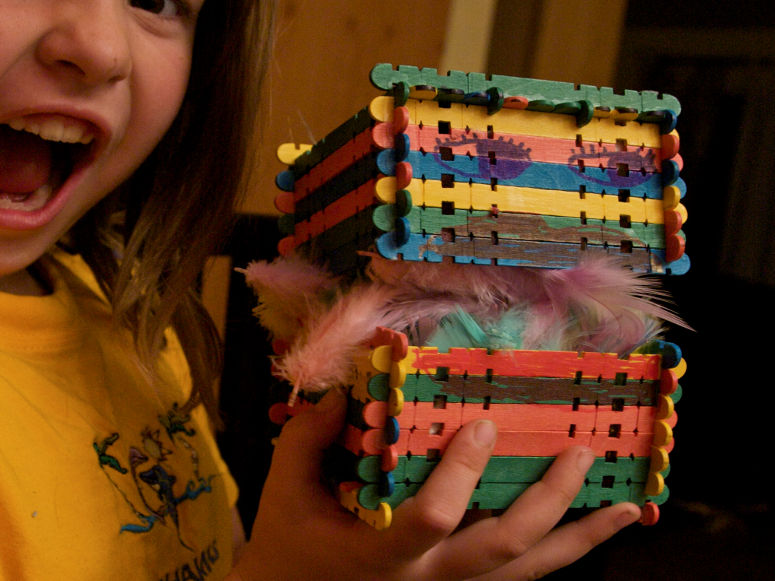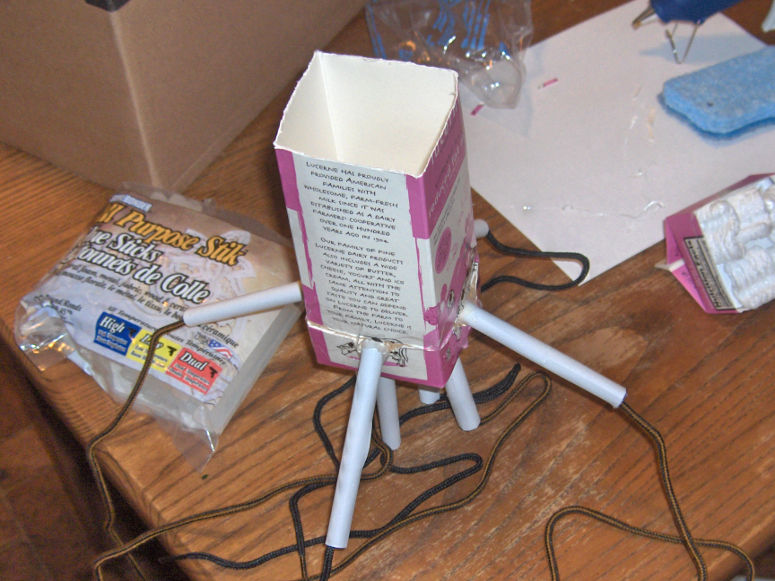Fun and easy science experiments for kids and adults.
Technology
Build a landing device for your egg and drop it from a height. In this experiment you will learn about deformation and how to prevent it.
| Gilla: | Dela: | |
Video

Materials
- A pile of mixed material (for example straws, paper cups, plastic bags, tape, modeling clay, plain paper, newspaper, popsicle sticks, toothpicks, balloons, paper clips and aluminum foil).
- 1 raw egg
Step 1


Step 2










Short explanation
When an egg collides with the ground, it deforms, probably to the point that it cracks. By constructing deformation zones around the egg, these are deformed instead of the egg.Long explanation
Deformation is a term within physics and technology that means a change in the size or shape of a body, for example when it's subjected to a force or a change in temperature. In this build, the egg is deformed (maybe) when it's subjected to a pushing force, more specifically in a collision with the floor. The deformation of the egg means that the molecules that make up the eggshell break apart.A collision is characterized by a force that is applied for a very short time. Such a rapid force usually has a greater effect than a force acting for a longer period of time. Materials are generally more fragile on short time scales than long ones.
To prevent a body from being deformed, deformation zones can be built around it. This is done in cars, among other things. A deformation zone works by "sacrificing" itself, i.e. deforming instead of the body you want to protect.
From a thermodynamic point of view, a body that moves has kinetic energy. The more massive the body is and the faster it moves, the more kinetic energy it has. When the body collides with something, this kinetic energy must go somewhere. If the collision is elastic, however, the kinetic energy remains kinetic energy. This can happen, for example, when one atom collides with another. Both atoms move away from the collision with the kinetic energy shared between them. But it's less common on a macroscopic scale. There, the collision is instead inelastic, which means that some or all of the kinetic energy is converted into another form of energy. And this can be bad. When the egg collides with the ground, much of its kinetic energy is converted into the kinetic energy of the particles that make up the egg. This counts as another form of energy - thermal energy (or heat). It's this thermal energy, i.e. the movement of the particles, that causes the material to break. This is because their movement breaks the chemical bonds that otherwise exists between the particles and that hold the material together.
Test and improve
You have now built your first prototype. There are probably improvements to be made. In order to keep working on your design, try answering any of the following questions.- What is the maximum height from where you can you drop your device without breaking the egg?
- What is the smallest functioning device you can build?
- How can you fit two eggs in your device?
- What is the best material to use in a deformation zone?
Variation
This build is often a fun competition. The team that survives the highest fall wins. One rule can be added - namely that the device must land within a certain area. This means that the device must fall in a controlled manner straight down. A fun variation of this competition is to let a naked egg fall into a device that is built on the ground instead. The height from which the egg is released gradually increases until there is only one winner! Another variation of the competition is to throw the egg device, which is suitable if you don't have access to somewhere high up. Here you need to create some form of throwing device that throws all egg devices the same. A suggestion here is a rubber band netween two nails in a plank. The nails should be at least 40 cm (15 in) apart and over them both you put a rubber band (you may need to tie several rubber bands together). Then pull the rubber band and shoot. If large egg devices are built, a larger space between the nails and more rubber bands tied together are needed.| Gilla: | Dela: | |
Similar
Latest
Content of website
© The Experiment Archive. Fun and easy science experiments for kids and adults. In biology, chemistry, physics, earth science, astronomy, technology, fire, air and water. To do in preschool, school, after school and at home. Also science fair projects and a teacher's guide.
To the top
© The Experiment Archive. Fun and easy science experiments for kids and adults. In biology, chemistry, physics, earth science, astronomy, technology, fire, air and water. To do in preschool, school, after school and at home. Also science fair projects and a teacher's guide.
To the top

































































































































